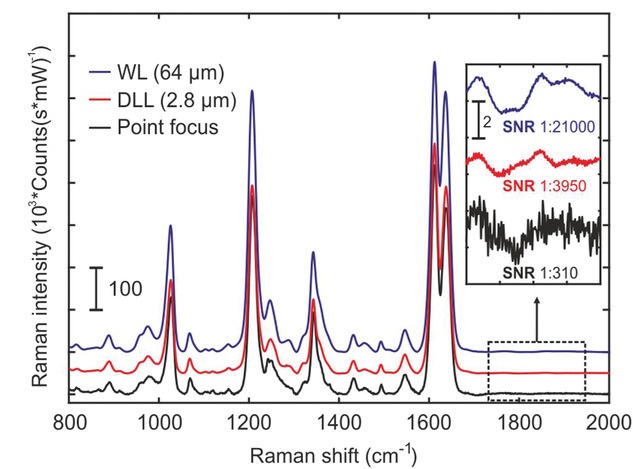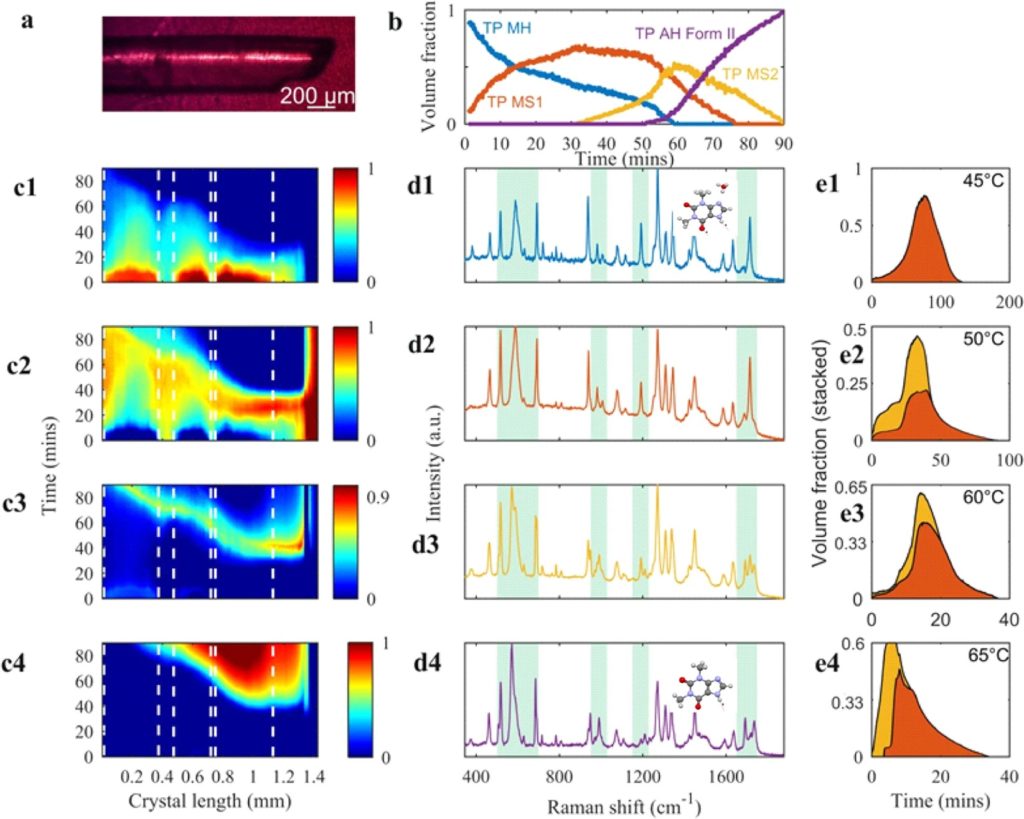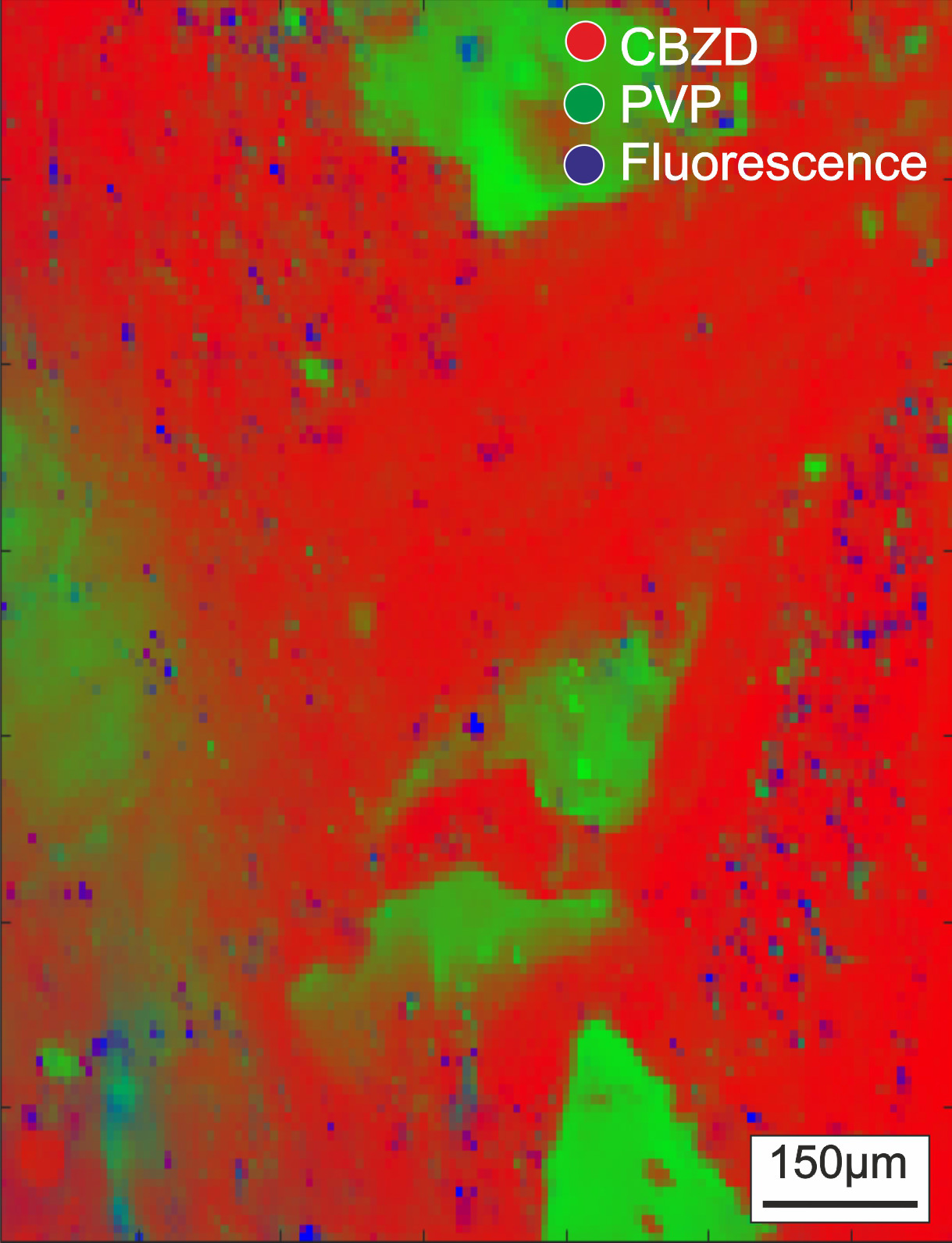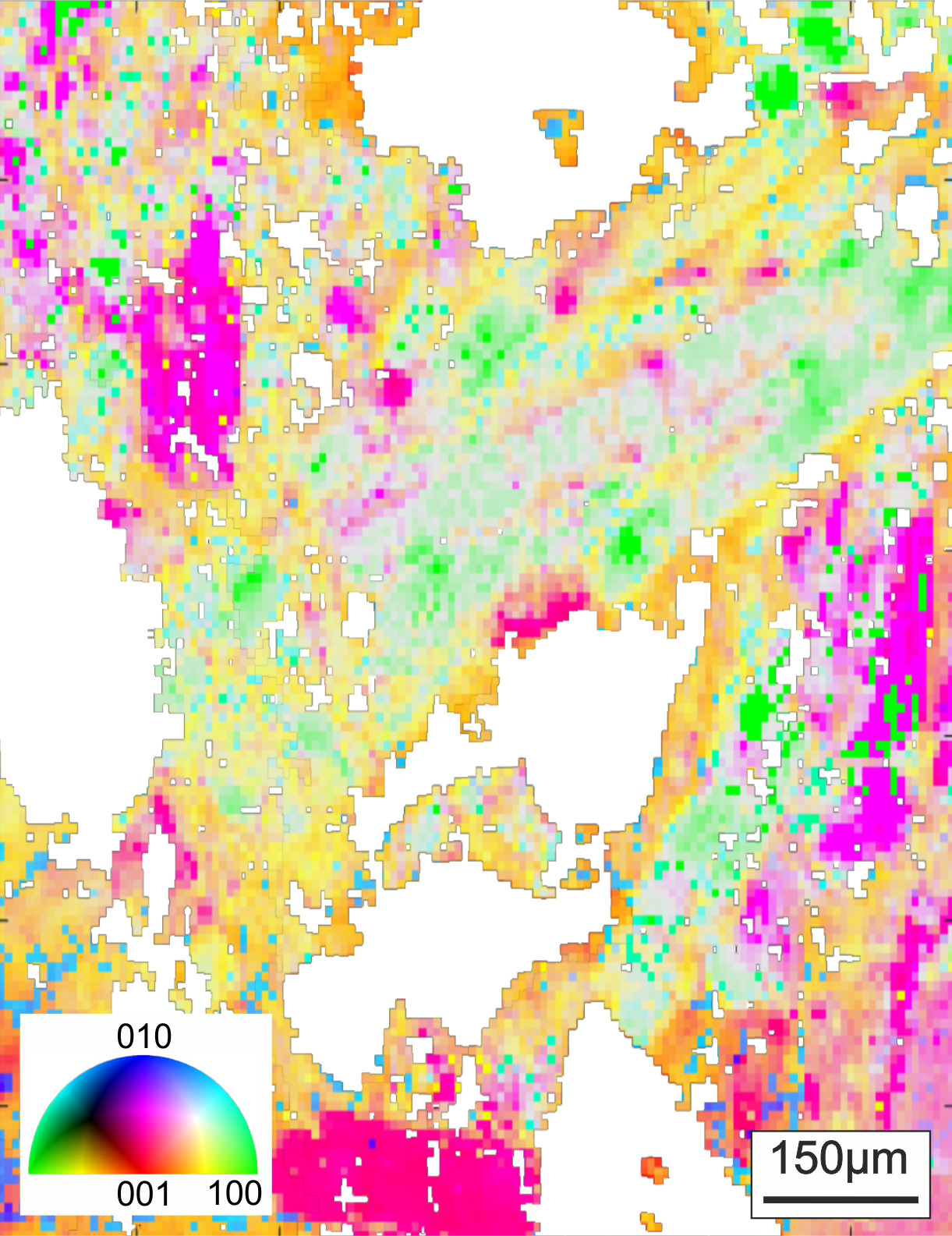Applications for THOR & qRICO technology
advanced Raman microscopy (THOR) quantitative crystallographic orientation
mapping of crystalline materials (qRICO)
Application for THOR technology
Deep volumetric Raman imaging (dVRI) by THOR system
In this situation, where the fluorescence of samples takes place, our THOR system operates with NIR laser with wavelength of 785 nm. However, sample transparency is limited, even when using a laser at 785‐nm excitation wavelength. It is important to mention that in‐depth Raman mapping is also limited by off‐axis laser refraction effects leading to Raman signal attenuation and decreased axial resolution. The usual way of addressing this problem is to increase the laser power and/or the exposure time. However, the latter leads to an unrealistic total time of 3D map acquisition (>3 days). Increasing the laser power, instead, overheats and burns the sample.
With THOR system, we present an efficient solution to solve the previously discussed problems of dVRI of samples that manifest fluorescence and low transparency. This result was achieved by the development of a confocal Raman microscope with high Raman signal throughput, optimization of sample mapping method, and further chemometric hyperspectral data analysis based on nonnegative least squares.
Wide Line SERS mapping by THOR system
See details here:
https://onlinelibrary.wiley.com/doi/full/10.1002/admt.201900999
Comparison of SERS microscope laser illumination modes. Here we present SERS spectra of BPE (10 µm concentration) measured on Au nanopillars substrate at point (black), DL line (red), and WL (blue) illumination modes; zoomed spectra in the range 1750–1950 cm−1 for SNR demonstration. All presented spectra were acquired at equal conditions: 0.2 mW µm−1 of laser intensity, laser wavelength 785 nm, exposure time 0.1 s, 10× magnification microscope objective. SNR was measured as signal divided on RMS noise.
Raman line-focus microscopy with chemical decomposition
See details here:
A Raman line-focus mapping option was applied for fast simultaneous mapping of differently sized and shaped particles of nitrofurantoin monohydrate, revealing the appearance of multiple solid-state forms and the non-uniformity of this particle system during the complex dehydration process. This method provides an in-depth understanding of phase transformations and can be used to explain practical industrial challenges related to variations in the quality of particulate materials.
Raman experiments resulted in a matrix that has two dimensions [t, S(ν)], where t corresponds to the temperature or time points, while S(ν) corresponds to Raman spectra. We registered 220 spectra from the laser line at each temperature/time point, and all spectra were grouped as follows: Mline = [t1(S(ν)1, S(ν)2, … S(ν)220), t2(S(ν)1, S(ν)2, … S(ν) 220), … tn(S(ν)1, S(ν)2, … S(ν) 220)], where n is the number of temperature/time points. In order to extract information about the concentration and spectral profiles of the studied model compounds, we used multivariate curve resolution (MCR) and non-negative least squares (NNLS) methodology. Both methods realized in THOR data analysis software package.
MCR and NNLS decomposed results of hydrate and anhydrous solid-state forms of theophylline. (a) Optical image of TP MH at 25 °C with laser line illumination (white line) from the Raman microscope (b) concentration profile of solid-state forms during isothermal dehydration at 50 °C for 90 minutes starting from TP MH to TP AH form II, via TP MS1 and TP MS2 (c1–4) chemical concentration maps (cut out artefacts from 1.8 mm laser line) of TP MH (c1), TP MS1 (c2), TP MS2 (c3), TP AH form II (c4) in the particle during dehydration where the laser line is illuminated, (d1–4) Raman spectra for TP MH, TP MS1, TP MS2 and TP AH form II respectively, (e1–e4) area plots showing only the dehydration profiles of TP metastable intermediates at four isothermal conditions (45, 50, 60 and 65 °C) where the colour under the area plots matches the TP metastable intermediates as shown in the concentration profiles. The stable forms of TP were taken into consideration for the area plots.
Application for qRICO technology
Semiconductors and Microelectronics
Solar cell manufactures have a keen interest in a qRICO device. Crystallographic orientation analysis is a critical step in the development of efficient solar cell panels. Existing analytical techniques (EBSD, XRF, etc.) for two-dimensional crystallographic analysis are too expensive and too limiting in their capabilities to be routinely used in an industrial environment. Similarly, strong needs exist in the semiconductor device and process monitoring market to deliver crystallographic analysis both in process development applications and also for quality control purposes. A qRICO device is uniquely suited for fulfilling the demands in these areas.
Dislocations and Stress in Electronics
Inhomogeneities and dislocations in hetero structured semiconductors with high levels of local heating in operation conditions can greatly reduce the lifetime of devices like LEDs and laser diodes. Therefore, nano- and micro-scale orientation mapping of such structures by qRICO provides important information in the development and quality control of devices.
2D Materials
qRICO has a great potential of quantitative orientation mapping in 2D materials. It is used for orientation determination and dislocation search of separate layers in multi layered 2D materials.
Ceramics
3D grain mapping is very important in ceramics technology, because properties such as fracture strength is strongly influenced by the statistical distribution of grain orientation and the grain boundary topology. Thus qRICO provides unique information in piezo-, magneto-, and ferroelectrics
Superhard Materials
3D grain mapping is very important in ceramics technology, because properties such as fracture strength is strongly influenced by the statistical distribution of grain orientation and the grain boundary topology. Thus qRICO provides unique information in piezo-, magneto-, and ferroelectrics
Crystalline Drugs and Proteins
Raman microscopy is often used for chemical mapping of pharmaceutical materials. It has been shown that polarised Raman microscopy can be used to visualise particles on the surface of tablet formulations, however so far no quantitative information on the orientation of single particles has been provided. We demonstrated successful Raman measurements of a content non-uniformity in a tablet containing carbamazepine dehydrate (CBZD) and polyvinylpyrrolidone (PVP).
Using multivariate curve resolution (MCR), these components were decomposed including the fluorescence background as shown in Figure on the left. Applying qRICO to the same area on the surface of the tablet, we obtained an orientation map of CBZD (monoclinic symmetry, C2h crystal class). These findings show the potential for qRICO to provide insight into crystal face functionality in pharmaceutical research as well as in materials science.
Chemical map obtained by qRICO device from the surface of a compacted tablet containing CBZD and PVP (2:1)
2D-qRICO map showing the random orientation of CBZD particles on the surface of the tablet. The colors refer to the orientations as defined by the inverse pole figure (bottom right). qRICO was performed at a step size of 8 µm, map dimension 134 × 134 pixels or 1072 × 1072 µm, exposure time per step was 150 ms.




